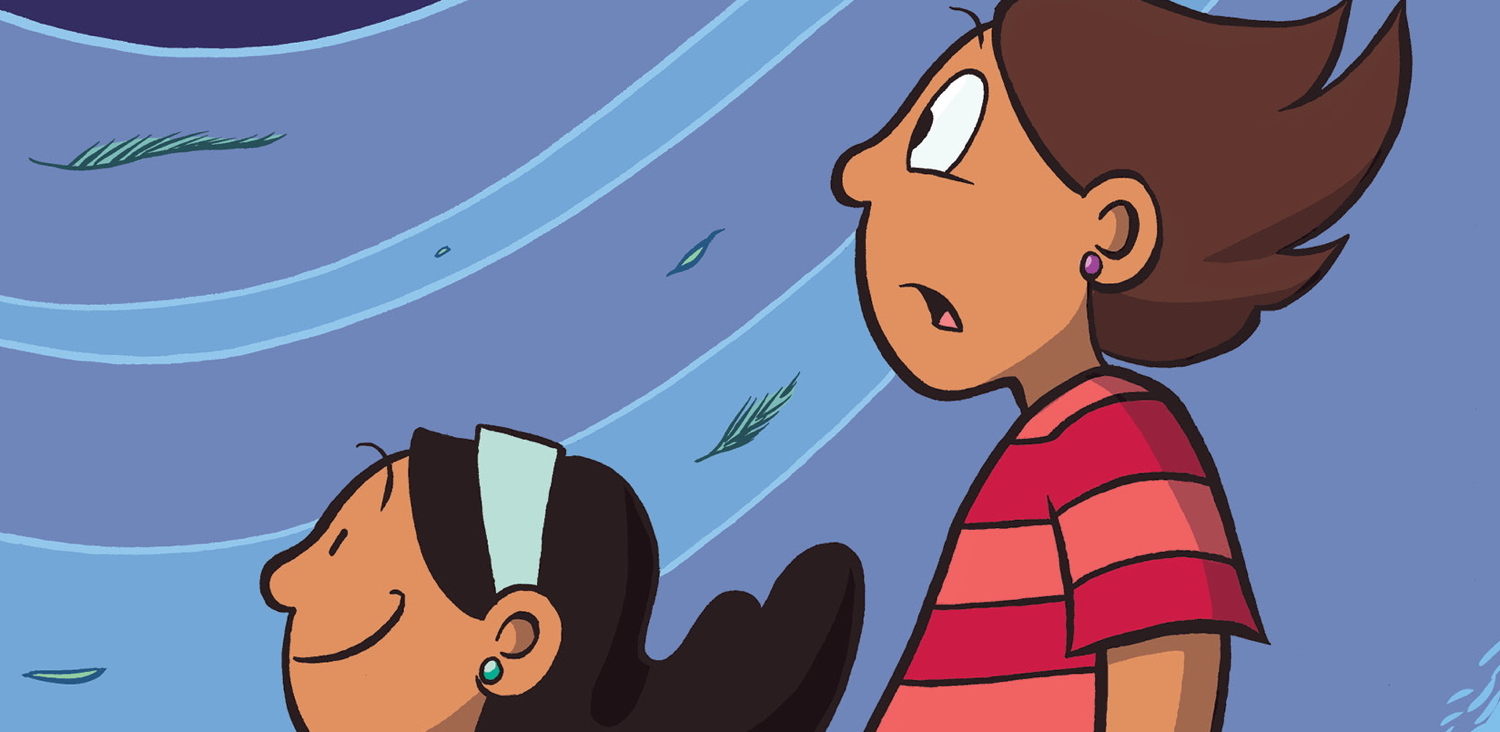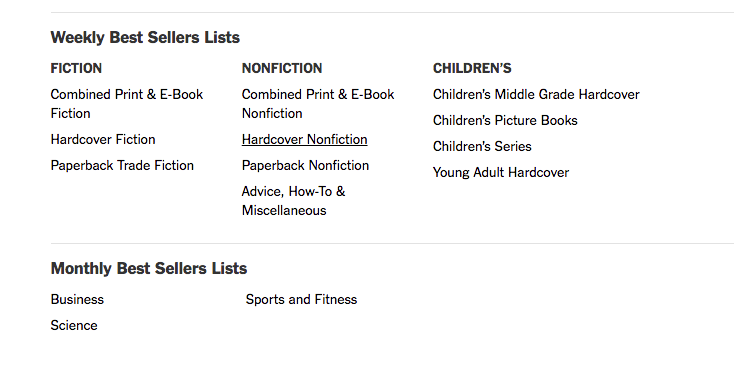About a year ago the New York Times shocked the publishing industry by dropping 11 of its bestseller charts for books. Some were for rather arcane formats – YA ebooks – others were low class formats – mass market paperbacks.
But only one entire medium was ditched completely: graphic novels, hardcover and paperback and manga, were all cancelled.
Since then there’s been a general feeling among book types that the lack of bestseller charts has had a negative impact on GN sales, and a 5% drop in GN sales on Bookscan indicates that something slipped.
The NY Times got some heat at the time and Pamela Paul, who runs the Times book department, backtracked a bit, promising, expanded coverage that has never really materialized.
Although the times claimed that “the discontinued lists did not reach or resonate with many readers” this is patently untrue. Graphic novels make up 6% of the book market in the US, a comparable number to well established genres like thrillers.
At the time, I pointed out that The Times has a history of reacting with alarm when a graphic novel made the bestseller list. IN fact, I was told that the Graphic Novel beestseller list had been created to avoid putting comics on the regular bestseller list. Paul seemed to be following in the Holy Roman Empire tradition of dismissing comics as not “real” books.
All this lingering anger built up over the last week with a petition started by literary agent Charlie Olsen, who handles such figures as Noelle Stevenson and Matt Kindt, among others. His petition circulated by email and was was signed by more than 400 members of the publishing industry (myself included). As reported in PW, it was sent to the NY Times publisher A.G. Sulzberger on Monday morning.
I was made aware of the petition a few weeks ago, and was going to report on it, but then I was told that it was going to be delivered to the Times without public fanfare. Which…if only there was some way to reach everyone via the internet and spread the word and build up steam for a protest/petition?
You can read the letter in full below, but a subsequent email from Olsen indicated that the NY Times had not yet responded to it. This email urged supporters to retweet the PW story, which indeed does have many likes and retweets. And notables have spoken out on Twitter as well:
It's no secret that my career benefited wildly from being on The List, and it would be nice if future creators had the same opportunity for exposure, validation, and prestige. https://t.co/iyQL3EGGzS
— Raina Telgemeier (@goraina) February 8, 2018
Raina’s tweet says it all. Being able to be named a NY Times bestseller was a huge lift to any emerging creator’s career, and helped both internally (bestsellers get more attention paradoxically) and externally -(it’s sell a badge of honor among many in the book world). Now no comic can get that prestige no matter how much it sells.
To be fair, in this toxic world we’re living in, the last of a GN bestseller list is a totally first world problem. Maybe people have other things on their minds.
In the big picture, the NY Times has scaled back its bestseller lists as a whole, partly as a result of budget cuts. But there’s still a monthly “Business” list.
Are graphic novels really lower on the book scale than business books? Alas, I think that is the lingering opinion of the “snobby set” in the book world. Whether that “snobby set” is still running things at the Times is unknown, but you can speculate all you want.
The petition in full below:
February 5, 2018
Dear A.G. Sulzberger,
We are writing to you as the publisher of The New York Times, the paper of record and the vital center of many cultural conversations.
A year ago, The New York Times Book Review announced that it would cease reporting a number of bestseller lists. Among them, the hardcover graphic, paperback graphic, and manga lists. A few months before, the medium had reached a new pinnacle: March by Rep. John Lewis, Andrew Aydin, and Nate Powell had just won the National Book Award, becoming the first graphic novel to do so. The book also won most of the awards at the American Library Association Midwinter Conference. March rocketed to the top of the Amazon rankings. Days later, those of us in publishing who get an early look at the list noticed that the Times had ceased graphic novel coverage. The response online was one of horror. At a time when the perennial question about graphic novels (“Yes, darling, but is it art?”) seemed to have been answered affirmatively and conclusively – a joyous moment – we were suddenly sitting outside of the larger conversation of literature. The Times made the following statement: “This change allows us to expand our coverage of these books in ways that we think will better serve readers and attract new audiences to the genres.”
A year later, we’re still waiting for that coverage to start.
Meanwhile, hundreds of authors (and their publishers) have watched their readership decline. Works from new authors have failed to find enough of a readership to stay in print. These people are deeply concerned about what this means for their future, while direct market store owners and librarians have lost a cultural touchstone – the bestseller list – that helps them better serve their community by anticipating what their patrons want to read.
The bestseller list is not the be-all-end-all of comics publishing, nor is it an indicator of literary quality, but it does help with the visibility of our medium, and thus helps advance comics as serious literature. The list plays an indispensable role in helping new readers discover books and making the storytelling that we love more visible in the cultural conversation about literature. Without the list, it’s harder for us to sell books, which makes it more challenging for publishers to take chances on new voices.
Each graphic novel is the product of a time-consuming, and often expensive struggle on the part of many people whose livelihood depends upon the book finding readers. If sales suffer, how will a young author get the support she needs to tell a new story? And what about the livelihood of the publishing professionals who ensure that what ultimately ends up on the shelf is of the highest quality?
We urge you to review the names at the bottom of this letter. We are award-winning comic book writers and artists, cartoonists, and graphic novelists. We are book publishers, editors, literary agents, and store owners. We are librarians, teachers, and journalists. We have written many readers’ favorite books. Our stories have been adapted for screens large and small. Your children might carry a lunchbox to school with one of our characters on it. Many of us are Times subscribers.
We are confident that you value freedom of expression and literature as much as we do. Since its founding, The New York Times has been the epicenter of intellectual coverage of the printed word. In a recent editorial, you wrote that the Times had to answer “an essential question: How can The Times hold on to the best of our journalistic traditions while also evolving to meet the changing needs of our readers and taking advantage of powerful new ways to find and tell stories?” If the Times continues to ignore one of the fastest growing mediums in literature, it’s also ignoring the needs of a growing readership.
We appeal to you as the new publisher of the Times to change course and live up to the paper’s reputation as the paper of record: increase coverage of the comics medium and bring back the graphic novel bestseller list.
Sincerely,










You speak of NYT budget cuts. They have earned more subscribers than in recent history, according to their own editor. But I guess they are using the extra money to pay Russians for dirt on Trump.
Isn’t the Washington Post starting up some bestseller lists? Maybe that would be a useful avenue. In many ways a better newspaper these days anyway.
“To be fair, in this toxic world we’re living in, the last of a GN bestseller list is a totally first world problem. Maybe people have other things on their minds.”
*rolls eyes*
According to the PW piece, part of Olsen’s intent with this petition is the hope that is will “open a dialogue with the New York Times” which is all well and good. But at the risk of being cynical and mercenary, I imagine the dialogue would be different if the comics industry–if some part of this letter’s 400+ signatory publishers, editors, writers and editors–were in a position to commit to regular and sustained paid advertising to the NYT, contingent on restoration of these lists, of course.
Obviously, I don’t know whether or not that offer has ever been made or contemplated, but if it hasn’t been, it maybe should be…
Comments are closed.